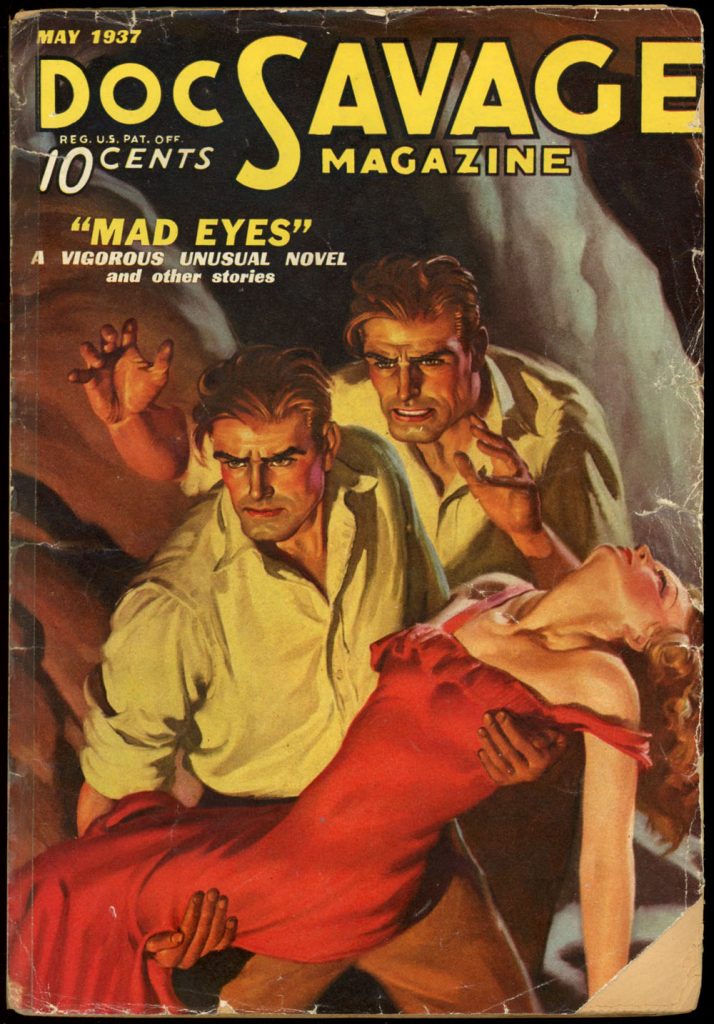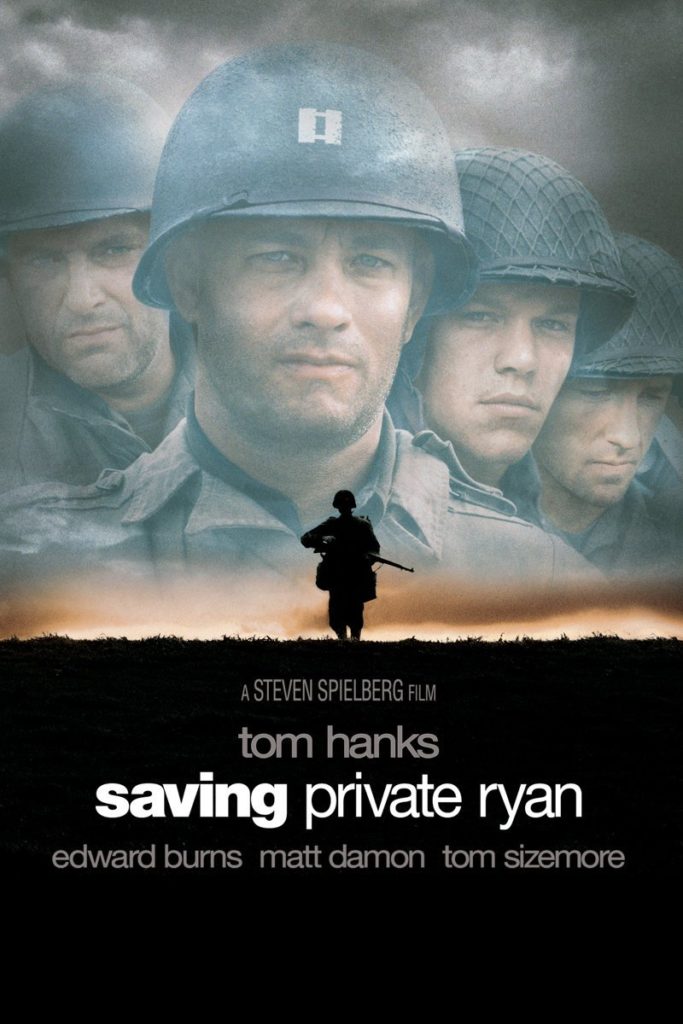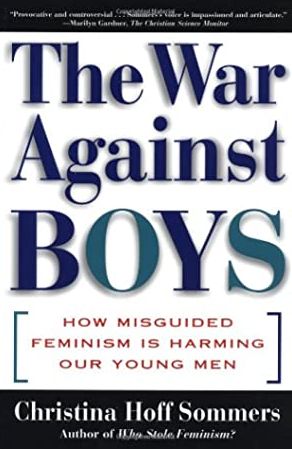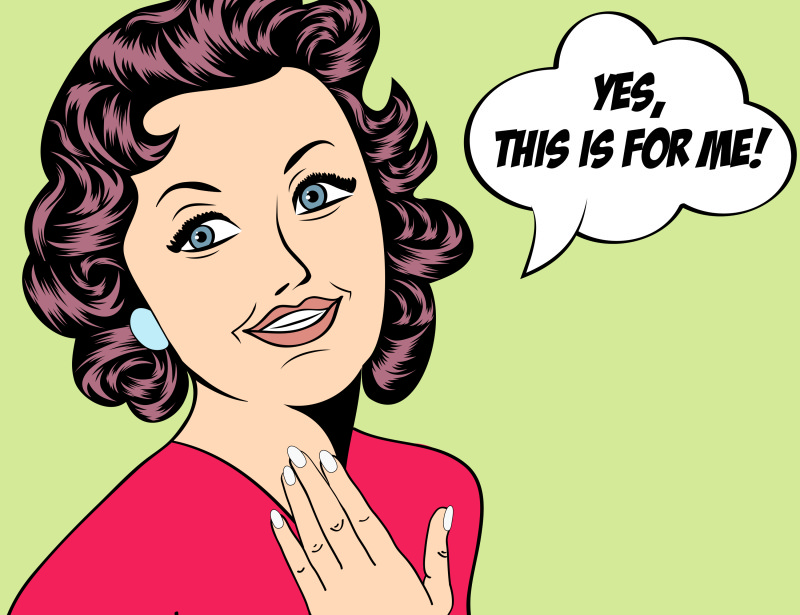In Pt. 1 of this series I suggested that both the demographics of readers and publishers, as well as the demographics of the evangelical church, have contributed to the disparity of male readers of Christian fiction. Admittedly, that disparity is the result of a confluence of other complex factors. So for those interested in increasing male literacy (both in fiction and non-fiction) as well as seeing more male readers engaged by Christian publishers, there is no easy fix.
Thus far, I’ve offered two possible reasons why Christian publishers have lost male readers. Those reasons were The Gender Gap and the fact that Evangelicals don’t read much fiction. Below I list three more possible reasons for this gender disparity in Christian fiction publishing.
“Clean”fiction” is not a high priority for most male readers
The term “clean fiction” has become a defining characteristic of Christian fiction. Clean fiction is, basically, “family friendly” or “safe” fiction. It’s “safe” because it contains no/very little profanity, no nudity, sex, or sexual innuendo, no/minimal graphic violence or gore, and is mostly uplifting, hopeful, and inspirational.
But is this the kind of content most men require of their stories?

Earlier books for boys and men were often characterized by images of rugged, muscular, adventurous men battling monsters or savages while fighting alongside busty heroines or rescuing swooning damsels. Political correctness has now rendered such stereotypes anathema. (It’s also replaced said stereotypes with a new one, the Strong Female Character.) Nevertheless, the visceral appeal of the early “boy’s genre” tapped into something that drew young men to those books and stories.
That phenomenon illustrated an important fact: Boys will often read what interests them. One of the first things that prompted me to become a reader was my love for monsters — dinosaurs, space aliens, nuclear mutants, etc. It led me to comic books, Weird Tales, Eerie, and a host of other graphic novel-type fare. Some 50 years later I still love monsters… and reading. Of course, temperament and environment played a part in cultivating this discipline. However, it was the subject matter and the visual allure that first drew my interest.
This dynamic was recently evidenced during the Harry Potter craze. In Potter’s magic spell turns boys into bookworms, the author notes how the series about the boy wizard energized male audiences:
Debbie Williams, children’s buyer at Waterstone’s, said: ‘I think that Harry Potter has had a big impact on literacy and particularly in encouraging boys to read more books. Following Harry Potter there has been a real demand from boys aged nine to 14 – traditionally a group that was not interested in reading books. Reading books is now cool and has a playground credibility, and boys want to have read the latest thing.’
The HP phenomenon is likely unrepeatable. Nevertheless, a similar formula seemed to have been at play in the early comic book and pulp magazine era. Those early pulp magazines were gateways to many male readers and writers, engaging them through images and narratives that evoked traditional masculine impulses.
A search for contemporary “Men’s Fiction” reveals lots of Must-Read lists, but few actual best-seller lists. Perhaps the closest is the Amazon category Men’s Adventure Fiction. The genre (predictably) includes espionage, survival, combat, sci-fi, western, noir, and martial arts. Similarly, Ranker aggregates Best Guy Movies, with the top ten containing films like Goodfellas, Saving Private Ryan, Braveheart, Die Hard, The Terminator, and The Good, the Bad, and the Ugly.
It doesn’t take an expert to conclude that men prefer less romantic and emotive fare for the more visceral, gritty, action-packed content. Which creates a potential problem for the Christian fiction market. For if “clean fiction” is one of the defining elements of Christian literature, much “masculine” content won’t make the cut.

This is not to suggest that Christian men want nothing to do with romantic content, are actively seeking “unclean” reading fare, or that profanity, violence, and sex are required for Men’s Fiction. Nor is it to suggest that “clean” fiction cannot be compelling reads. Yet to the male, occasional profanity, blood and gore, or even cleavage is not as off-putting as to traditional Christian fiction readers. The active gravitation away from such content, and branding an entire genre as “family friendly” or clean,” has exacerbated the existing gender gap and driven the Christian male’s interest in stories (whatever still exists!) to other alternatives.
Evangelical churches are losing men
According to Pew Research, about one in five men attends religious services weekly US Congregational Life Survey corroborates, noting that women constitute 61 percent of churchgoing adults. The lack of men reading Christian fiction is evidence of a much larger, and more serious, issue — the evangelical church’s inability to connect with men.
The Church’s difficulty in attracting males may be due less to a deficient outreach model and more reflective of a much larger cultural issue — the feminization of boys and the shaming of traditional masculinity.
Earlier this year, one of the most venerable American institutions, Boy Scouts of America (BSA), filed for bankruptcy. This announcement came amidst declining membership and a wave of sex abuse lawsuits. As Al Mohler notes in his February 19, 2020 podcast of The Briefing, back in 1991, BSA released a position statement that stated, “We believe that homosexual conduct is inconsistent with the requirement in the scout oath that a scout be morally straight and in the scout law that a scout be clean in word and deed and that homosexuals do not provide a desirable role model for Scouts.” But a slow creep began, as BSA progressively softened their stance on homosexual inclusion, in 2013 stating it would “no longer deny membership to youth on the basis of sexual orientation.” Eventually, they accepted gay Scout leaders. And after ongoing pressure from LGBTQ groups to accept transgender boys (that is, girls who declared identity as boys) the group eventually changed its name to Scouting USA. This, compounded by the numerous sex abuse claims, led to the group’s bankruptcy. But as Mohler notes, the heart of this collapse was the moral erosion of BSA’s central mission of “helping boys to grow up into maturity and into manhood.”
The collapse of the Boy Scouts of America is reflective of a much larger moral decline and attack on traditional masculinity.

Christine Hoff Sommers in her book The War Against Boys, outlines this assault on traditional masculinity by suggesting that it has become “fashionable to pathologize the behavior of millions of healthy male children. We have turned against boys and forgotten a simple truth: the energy, competitiveness, and corporal daring of normal males are responsible for much of what is right in the world. No one denies that boys’ aggressive tendencies must be mitigated and channeled toward constructive ends. Boys need (and crave) discipline, respect, and moral guidance. Boys need love and tolerant understanding. But being a boy is not a social disease.”
Some have even went so far as to define masculinity as mascupathy (masculinity-plus-pathology). This “pathologizing of masculinity” has resulted in a demonization of “traditional cultural masculine norms.” The term “toxic masculinity” is now used to describe
…traditional cultural masculine norms that can be harmful to men, women, and society overall; this concept of toxic masculinity is not intended to demonize men or male attributes, but rather to emphasize the harmful effects of conformity to certain traditional masculine ideal behaviors such as dominance, self-reliance, and competition.
While traits like leadership, courage, protectiveness, adventure, self-reliance, competitiveness, and daring can be used for “toxic” ends, they can also be God-given virtues designed to equip and further men. Nevertheless, the shaming of traditional masculinity, the pathologizing of inherently masculine traits, the normalizing of gender fluidity, and the rise of a more aggressive feminism, have led to what some call a “crisis of masculinity.”
The statistics are staggering:
- 99.999% of American combat deaths and casualties (historically) are men.
- 76% of homicides are men (DOJ).
- 80% of Suicides are men (CDC).
- A woman is the party filing for divorce in about 66% of divorce cases.
- Women receive custody in about 84% of child custody cases.
- The sentencing disparity between men and women exceeds that between whites and any other minority.
- 63% of youth suicides are from fatherless homes (US Dept. Of Health/Census) – 5 times the average.
- 90% of all homeless and runaway children are from fatherless homes – 32 times the average.
- 85% of all children who show behavior disorders come from fatherless homes – 20 times the average. (CDC)
- 80% of rapists with anger problems come from fatherless homes –14 times the average. (Justice & Behavior, Vol 14, p. 403-26)
- 71% of all high school dropouts come from fatherless homes – 9 times the average. (National Principals Association Report)
- 75% of all adolescent patients in chemical abuse centers come from fatherless homes – 10 times the average. (Rainbows for All God’s Children)
- 70% of youths in state-operated institutions come from fatherless homes – 9 times the average. (U.S. Dept. of Justice, Sept. 1988)
- 85% of all youths in prison come from fatherless homes – 20 times the average. (Fulton Co. Georgia, Texas Dept. of Correction)
Despite this “crisis of masculinity,” many assert not only that the Church has failed to engage boys and men, but that it has become “feminized.”
In his article The Feminization of the American Pulpit, podcaster Eric Conn chronicles the Church’s historical shift away from men to women as heightened by the advent of the printing press and mass media:
In her book, The Feminization of American Culture, Ann Douglas details how many ministers in the early to mid-1800s took advantage of the advent of mass media that arose because of the advancement of the printing press.
Rejected as effeminate by the masculine world of business, trade, and politics and facing extinction, liberal ministers recognized they could build a platform of influence among literary-minded, middle-class women and urban intellectual elites by writing for leftward newspapers, inhabiting academia, and publishing sentimental books. And write they did.
Aimed at middle and upper class women, their content was, Douglas says, highly sentimental, emotionally driven, and politically liberal. They knew they had to retain at least an homage to Calvinism to get Americans to swallow the pill, so they softened it for the sake of widespread palatability. Call it Calvinism Zero.
Rather than dealing with the masculine world of business, politics, or theology—a world from which they had been banished—their writings focused on social causes: women’s rights, alcohol abuse, slavery, children, etc. Rather than creating a new market with their content, Douglas notes, ministers were instead tailoring their message to already existing female interests and appetites.
Likewise, two fundamental assumptions among liberal clergy (and the women they addressed) were that, first, women are morally pure and more naturally disposed to religion than men; second, that men were worldly for being business-oriented and culture-facing, ruined women and children through alcohol abuse, and must become more like women (receptive, passive) if religion were to benefit them.
One of the most prominent early publishers, the New York-based Harper’s realized the key to success was writing to women even when a book or magazine was supposedly for men. Their theory—and a successful one at that—was that women would buy the books and tell the men what to read.
While this doesn’t sufficiently answer today’s disparity of female to male ratios in church attendance, it does provide another historical context for the evangelical church’s inability to engage men. While, more recently, groups like Promise Keepers were wildly successful at attracting Christian men, the movement was predictably undermined by criticism that such endeavors furthered a type of patriarchal toxicity. This is also a charge often brought against John Eldridge’s popular Wild at Heart: Discovering the Secrets of a Man’s Soul.
So another possible reason that evangelical publishers are losing male readers is simply because evangelical churches are losing male congregants. Not only has the Church and its leaders failed to properly counteract the culture’s attack on masculinity and traditional gender roles, but it has drifted leftward, embracing a kind of soft emotivism and femininity that many men do not find compelling.
Christian publishers market mainly to women
I recently commented on my Facebook page about the disparity of female to male nominations for the 2020 Christy Awards. I wrote:
Wow. Only one man (out of 28 nominations) made the Christy cut this year. And even THAT book was co-written with his daughter. Is it me, or is Christian fiction becoming almost exclusively a female genre?

Of course, this disparity is more evidence of the existing demographic tilt than it is some conspiratorial effort. Indeed, Christian publishers — like ANY publisher — would want to broaden their market as much as possible. Which leads one to ask whether the Christian market is interminably fixed. One need only browse the Christian fiction aisle at their local bookstore to see the proliferation of romance, historical romance, Amish fiction, and mysteries written by and for women. While some cite the historical arc of the mainstream Christian writers’ organization (American Christian Fiction Writers Association, the largest professional organization for Christian writers, began as American Christian Romance Writers before changing its name), others see the disparity as partly organic.
Tim Challies in an article entitled Why Men Aren’t Reading Women Writers, notes “Men write for men and women; women write for women. In other words, a substantial percentage of the books written by women are for women while a substantial percentage of the books written by men are for both men and women. There are exceptions, of course, but in general, women are far more likely than men to write books specifically for their own gender.” He concludes:
“…publishers are asking women to write books for women. They are not asking women to write books for men and women.”
Whether or not Challies’ theory holds water, the marketing element of the male reading equation is in play. Best-selling thriller author Jason Pinter, in his article Why Men Don’t Read: How Publishing is Alienating Half the Population, describes this lack of marketing to men as a self-fulfilling prophecy.
Because if you’ve worked in publishing, you’ve heard the tired old maxim: Men Don’t Read. Try to acquire or sell a book aimed predominantly at men, and odds are you’ll be told Men Don’t Read. This story is not an isolated incident. And while the book I’m discussing is not everybody’s piece of cake, is is a microcosm of what I believe is a huge problem within the industry. If you keep telling yourself something, regardless of its validity, eventually you’ll begin to believe it. So because publishers rarely publish for men and don’t market towards men, somehow that equates to our entire gender having given up on the reading books. Hence the mantra ‘Men Don’t Read.’ THIS MUST END.
In my opinion, this empty excuse of ‘Men Don’t Read’ has begotten a vicious cycle.Men read. Tons of them do. But they are not marketed to, not targeted, and often totally dismissed. Go to a book conference, a signing. Outside of a Tucker Max event, what percentage of attendees are men?
Paul Maxwell, a former acquisitions editor for Zondervan, echoes the above sentiment. In THIS YouTube video, Maxwell revealed some fascinating publishing practices — the majority of books are marketed to women. Even books written for men are marketed to their wives. Maxwell notes:
“There is one piece of folk wisdom among Christian publishing that guides a lot of book acquisition and marketing. Men don’t buy books. Women buy books. That governs most publishing acquisitions and marketing strategy. So even books that we acquired for men were actually marketed to sell to women, mainly, to buy for their husbands or sons.”
In fact, Maxwell goes on to suggest that Christian men are now gravitating to public, more alpha male-type figures like Jordan Peterson, Joe Rogan, and Ben Shapiro, partly because traditional masculinity is being replaced by “beta males” and the American church is somewhat following suit.
Perhaps the lack of marketing to males is simply a reflection of the lack of genres which male readers gravitate towards. Whereas the general market contains all possible genres, from Crime to Sci-Fi to Western to Horror, the Christian fiction market is surprisingly narrow. Thus, publishing genres that might be attractive to males are far more risky in the Christian market.
A good example of this comes from Jon Breen, writing for The Weekly Standard, about my writer friend J. Mark Bertrand. In Divine Deduction, Breen describes Bertrand as “a major crime-fiction talent,” admitting that he’s “one of the best police procedural writers I’ve come upon in years.” Breen proceeds to describe Bertrand’s three-book crime series (beginning with Back on Murder), published by Bethany House, in rather glowing terms:
The police procedure has a feel of authenticity, with extensive detail of weaponry and forensics, and the course of the investigation bears some of the messiness of real life. The narrative energy is relentless. The visual, cinematic style sticks to a single first-person viewpoint, a unity some contemporary thriller writers violate to their detriment. Present-tense narrative annoys some readers (including this one at times), but its sense of urgency and immediacy is effective in the [Roland] March novels.
There’s just one problem…
Bertrand is a major crime-fiction talent—one of the best police procedural writers I’ve come upon in years—but he has not reached nearly the wide audience he deserves for a simple reason: His novels come from a religious publisher. (bold mine)
One would think a religious publisher, just like any publisher, should be about cashing in on their clients’ talents. Then again, perhaps the genre itself and the audience for it, are nowhere to be found in Christian publishing circles.
Because Women’s / Historical / Suspense fiction is the wheelhouse of the Christian market, publishing houses are now designed to crank out this product. With our changing economy, said publishers are forced into “safe mode.” And since men who read gravitate to specific fare and that fare is, mostly, outside the purview of the Christian market, male Christian writers and readers are forced to look elsewhere.
In this way, one possible reason that Christian publishers are not connecting with male readers is because of marketing. A viscous cycle is being fed. Not only have we embraced the myth that “men don’t read,” attempts to engage them are dismissed as having been tried and found lacking. Thus, we create our own self-fulfilling prophecy.
***
Let me conclude by saying that I write this out of appreciation and hope for Christian publishing. I sometimes get charged with being overly-critical of and unfair to the Christian fiction industry. But while I’ll agree to being critical, I do so out of hope and a desire for industry growth. As a Christian, a Christian reader, a church-goer, a father, and a grandfather of five boys, I want to see men engaged more by the Church and by Christian publishers. That would begin, however, by seriously considering possible causes of the existing disparities and the courage to tackle them directly. My hope is that this short series will contribute to that end.
















Oooh, a Mike post! As I’m leaving FB behind, I miss reading blog posts from people who stay securely within the FB cage.
It’s interesting to see this perspective, with Christian publishers failing to engage a male audience. Then I read JD Cowan’s blog, especially about the retrospective on the history of fandom. How pulps written for men (or anyone!) were ruthlessly shut down and hijacked by the Woke crowd. They wanted to push their agenda, and stories that are fun and entertaining do not push the Woke Gospel. I think it runs in parallel to what we see in Christian publishing.
Thank you, Mike! Very true! Years ago, before everyone started buying books online, a Christian reviewer commented that most people won’t enter a Christian bookstore because it’s like visiting your grandmother’s house, where everything is sweet and harmless and outdated, having little to appeal to modern book buyers. I think that general feeling still applies to the Christian market. Who else would think it makes sense to call “Amish fiction” a genre?
In those days, I enjoyed going to Christian bookstores, but always with an empty hope of finding more than one fiction book – or even one – that I would want to read. Those very few books that offered an interesting action-adventure or science fiction or suspense thriller concept were, 90% of the time, dragged down by boring characters, amateur writing, preachiness, and a sad lack of genuine action. As you mentioned, the attractive aspects of pulp fiction stories that men enjoy, were always missing, in order to keep stories “clean”. Which typically resulted in boring.
In one famous Christian author’s book, the main character hears a stranger enter his hotel room nd fears it’s a killer … so he hid in the shower! In another author’s book, the Christian hero tries to help the gun-toting mercenaries, but sneaks off on his own and does something foolish that the mercenaries have to fix later, because the Christian felt it was the right thing to do. I’m looking for heroes who stand up for their faith without being cowardly fools who need gunslingers to save them. These male Christian heroes were damsels in distress, and really naive, incompetent ones.
I would love to see some Christian heroes who act like the soldiers and spies and superheroes that I enjoy in general market books. But I think the Christian market has become too cautious to ever provide this, unless they stop pandering to their current audience and actively seek new readers. That’s a very risky business move, and I can’t see it happening since the problem is that the publishers are averse to big risks. Their system is too entrenched in marketing to women, as you’ve shown. I feel it must come from Christian writers publishing in the indie and general market, seeking new male readers with appealing stories that have a surprising moral and/or faith component built into them as organic story elements. That’s what I’m trying to do and the path I see for providing Christian stories for men. But it won’t get any big fanfare. Just a quiet and gradual shift in fiction offerings.
Readers need to believe that the characters are in actual danger. That usually means some true violence needs to occur in the story. The hero also needs to be allowed to respond with violence. This is not to say that the violence itself is what entertains the reader. Instead the reader is entertained by the danger posed to the hero and the hero’s struggle to respond.
Many of the other standards for “clean” fictional are fine. But the requirement to eliminate violence destroys drama.
Bill, I completely agree. And this speaks to the difference between fiction that generally resonates with women vs. men readers. Romantic suspense stories that are often popular with women have little genuine danger or action involved. The Twilight series was super popular among teen girls, even though it featured vampires and werewolves. But the danger was only in a small portion of each story, while the rest focused on the relationship(s).
Many other women’s thrillers are like the Kevin Costner / Whitney Houston film “The Bodyguard”, very relationship-heavy with minimal action. Several Christian thrillers have followed the same vein, with nothing much at stake, no serious threat of violence, and no impressive action from the Christian “heroes”. The most action I have seen over the years are from the Dee Henderson thrillers, which are clearly identified as romantic thrillers and are expected to be that way. The rest of Christian thrillers should be using her stories as good models and taking the action up several notches.
I encountered a potential gatekeeper for the Christian market while selling my Civil War graphic novels at a large, regional Christmas market show. A grandmotherly woman came over and started looking through my books and asked if there was anything ‘offensive’ in them. My partner and I had done the books with the intention of getting them into school libraries, and so we had been conscious of not doing even the standard-type comic-book violence. There was, of course, no sex, and we thought, no profanity. My danger metter started sounding the alarm and fearing a lost sale I just muttered, That I didn’t think so. The woman continued leafing through a book when she suddenly erupted, “I would never show filth like this to my precious grandsons”, and slamming the book down stormed off. Of course, I was curious about what could have caused such a reaction, so I picked up the book, and since she had bent it when she slammed it down it was easy for me to see what the offensive page was. The only thing on the page that I could see that could have caused such a reaction was a panel where a character had been shot at, and when the shot missed he said, “Lordy.”
I decided then that trying to sell our books in the Christian market probably wasn’t going to work out.